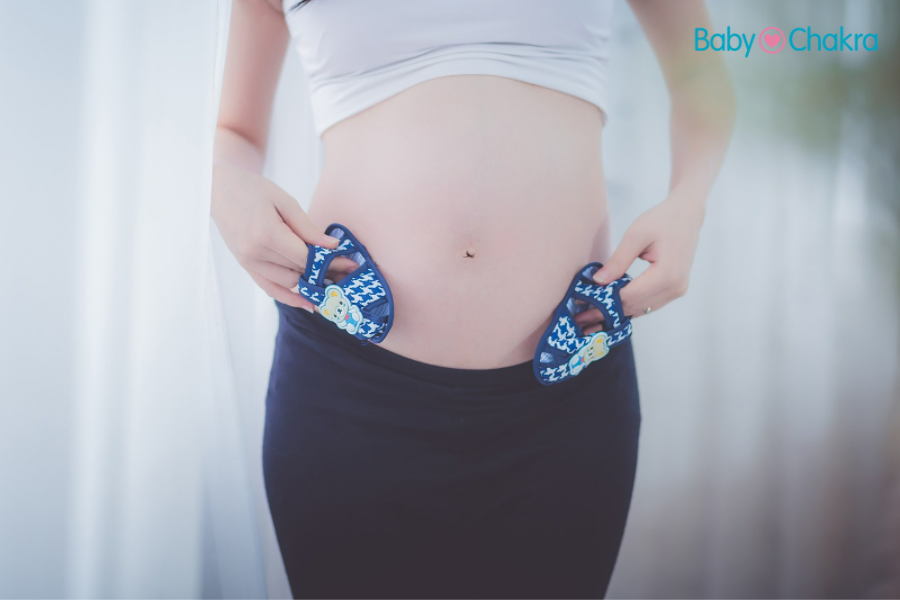
White Discharge During Early Pregnancy: Is It Normal?
10 May 2018 | 5 min Read
Dr Amit Upadhyay
Author | 2 Articles
Pregnancy prepares a woman’s body to nurture and support a growing baby in the womb. Various changes take place in a her body during this phase. Among these changes, white vaginal discharge is one of the most common ones.
It is common for a woman to have some vaginal discharge starting a year or two before puberty and ending after menopause. White discharge during early pregnancy or in any of the trimesters is common. The vagina secretes a thin milky-white discharge with a mild odour. This is called leukorrhea and its volume increases throughout pregnancy to reduce the risk of vaginal and uterine infections.
The clear discharge during early pregnancy comes from your cervix, the neck of the uterus and you might have to wear panty liners to absorb the excess discharge.
White Discharge During Early Pregnancy – What To Expect?
During pregnancy, you might notice an increase in white creamy discharge due to higher levels of oestrogen. Changes in vaginal discharge can begin as early as one to two weeks after conceiving, even before you’ve missed your period.
Studies have shown that as the pregnancy progresses, this discharge usually becomes more noticeable. White discharge in the 9th month of pregnancy is perhaps the most prominent and the heaviest.
What Causes Changes to Vaginal Discharge During Early Pregnancy?
Hormonal changes during pregnancy along with changes to the cervix affect vaginal discharge. As the cervix and vaginal wall soften, the body produces creamy white early pregnancy discharge and helps prevent infections.
As you near the end of your pregnancy, your baby’s head might also press against the cervix, leading to increased vaginal discharge.
Reasons for White Discharge During Early Pregnancy
Some of the reasons for having a thick white discharge during pregnancy are:
- Leukorrhea: The most common reason for the vaginal discharge in early pregnancy is leukorrhoea. It is normal and happens to several expecting women.
- Yeast infection: Vaginal discharge during early pregnancy can also be the result of a yeast infection. Some of its symptoms include a vaginal and vulval itching, soreness, and burning.
Along with this, you might also notice swelling in the folds of skin on the exterior of your vagina. The discharge will usually be white and lumpy and can also have a texture that resembles cottage cheese.
- Bacterial vaginosis (BV): Bacterial vaginosis is the result of an imbalance in the normal bacteria existing in a woman’s vagina and is a serious concern during pregnancy. It also leads to an increased risk of preterm birth or miscarriage.
The discharge is thin and greyish-white, green, or yellow and can have a fish-like odour and becomes stronger after penetrative vaginal sex.
- Sexually Transmitted Infections: Sexually transmitted infections can be the result of bacterial or viral infections that are transmitted through oral or anal sex.
It also causes a white discharge and has a foul smell. You might experience pain during sex and urination.
The most common STI is Gonococcal infection and can be treated with antibiotics.
Should You Consult A Doctor?
White discharge during pregnancy does not need medical attention unless you have an abnormal discharge. Consult the doctor if:
- The discharge is yellow, green, or grey
- The discharge has a foul odour
- The discharge is accompanied by redness or itching, or vulvar swelling
Tips to Deal With Vaginal Discharge And Prevent Infection
There are some steps that you can follow to deal with the vaginal discharge during pregnancy and make yourself more comfortable:
- Use panty liners as these will keep you dry and comfortable.
- Try to wear underwear that is crafted from cotton that will allow your skin to breathe and change it at least two to three times a day.
- You can use unscented soap and water for washing your genital area.
- It is advisable to wash your hands properly before and after touching your vagina.
- Ensure that your vagina is well-lubricated before having sex.
- Try to clean your vagina by wiping from front to back, especially after having sex.
- It is advisable to avoid wearing a tampon to absorb the discharge as these can cause infection.
- Try to avoid douching as it might wash off the good bacteria in the vagina.
Conclusion
Although an egg white discharge early pregnancy is normal, unusual discharge alongside strong odours, cramps, spotting or bleeding is indicative of a health issue. Hence, it is advisable to consult your doctor if you experience any discomfort instead of trying to treat yourself with over-the-counter medications or feminine hygiene products.
FAQs
How does the discharge look like in early pregnancy?
The discharge in pregnancy due to increased hormones is thin, clear or milky white. It has a mild odour.
What kind of discharge indicates pregnancy?
Sticky, white, or pale-yellow mucus indicates pregnancy. However, it is advisable to get the test done.
Is white discharge normal in early pregnancy?
It is normal to have white discharge during pregnancy. White discharge from the vagina can occur throughout pregnancy.
A


Related Topics for you
Suggestions offered by doctors on BabyChakra are of advisory nature i.e., for educational and informational purposes only. Content posted on, created for, or compiled by BabyChakra is not intended or designed to replace your doctor's independent judgment about any symptom, condition, or the appropriateness or risks of a procedure or treatment for a given person.
